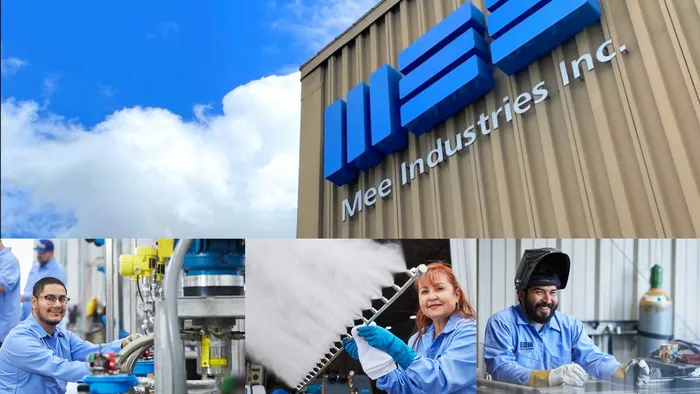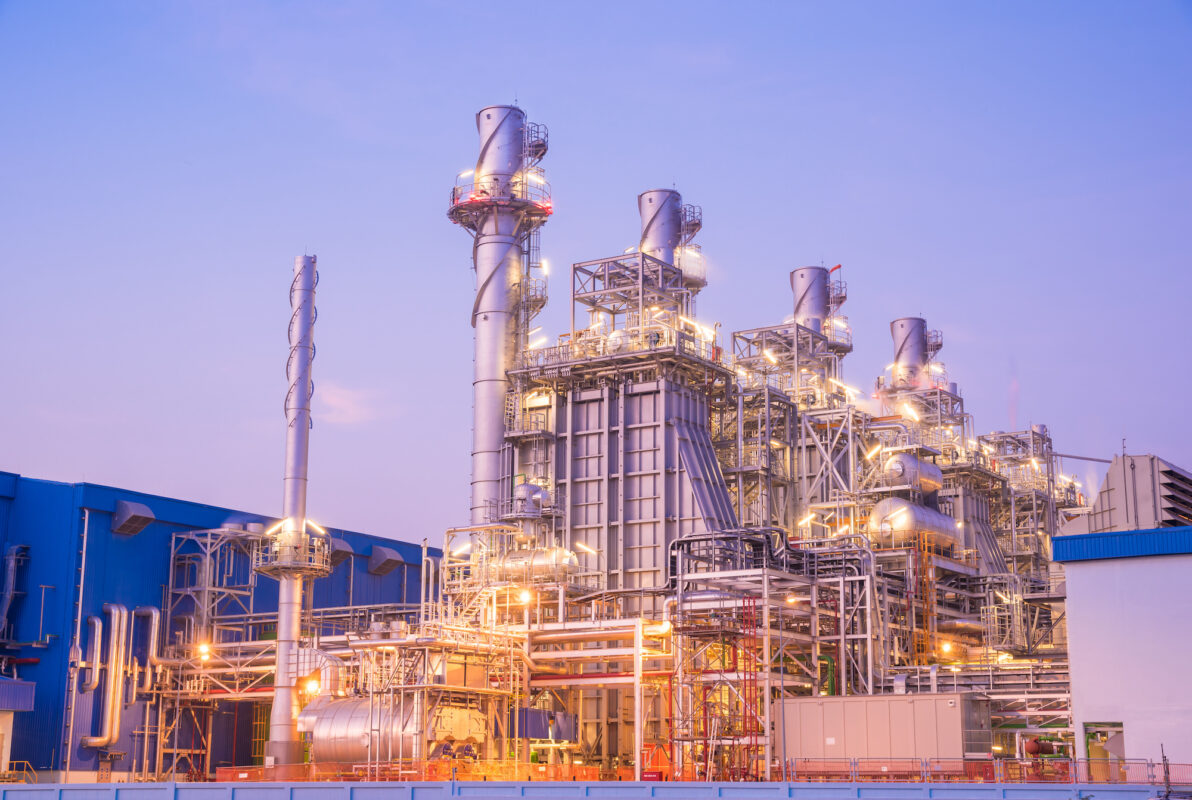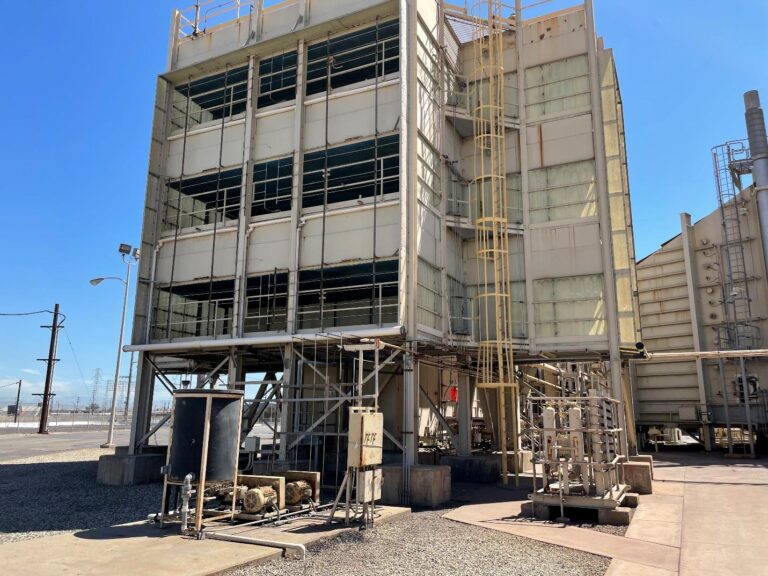Gas Turbine Inlet Air Fogging: Wet Compression
BlogA gas turbine compressor consumes half or more of the work produced by the expansion turbine. Therefore, an increase in compressor efficiency can produce a significant rise in the power output and fuel efficiency of a gas turbine. Wet compression systems are designed to increase your gas turbine power output at a fraction of the cost of new power generation equipment.
Wet Compression Power Augmentation
Wet compression is a gas turbine power augmentation method that consists of injecting atomized water droplets (fog) directly into the gas turbine compressor to improve output and heat rate. When the ultra-fine water droplets evaporate inside the compressor, they reduce the temperature and significantly reduce the energy consumed by the compressor, which means more power is available at the output shaft of the gas turbine. Wet compression systems produce a power boost beyond that available from evaporative cooling. The power boost does not change with changes in ambient temperature or humidity, and the boost is available whenever the ambient air is warm enough to avoid the risk of ice formation at the inlet, typically warmer than 45°F (7°C).
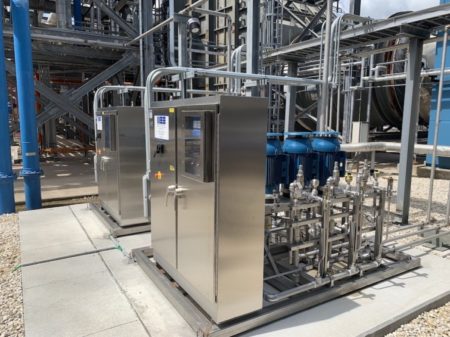
The MeeFog pump skid provides high pressure water to fog manifolds located close to the turbine inlet.
Nearly Instant Power Boost of 20% or More with Wet Compression Overspray Fogging
When MeeFog systems are used for wet compression they produce more power than can be obtained by evaporative cooling alone. MeeFog wet compression systems produce a power boost of 8% to 10% for each one-percent (of the air mass flow) of water injected.
The first MeeFog wet compression system was installed on a GE 7EA turbine in 1995. Since then, Our installed base of wet compression systems runs from small aeroderivative turbines all the way up to the 269 MW GT26 turbine. We have installed nearly 300 wet compression fogging systems on power generation gas turbines, with flows from less than 1% to more than 2%.
Load Following with Wet Compression
Wet compression systems can be configured with many stages of water output, with each stage producing a predictable power increase; one megawatt per stage for example. This allows the wet compression system to be used to increase or decrease GT output by adding or removing fogging stages. The wet compression system can also be connected to an Automatic Generation Control signal, so the system automatically ramps up and down to deliver power when needed.
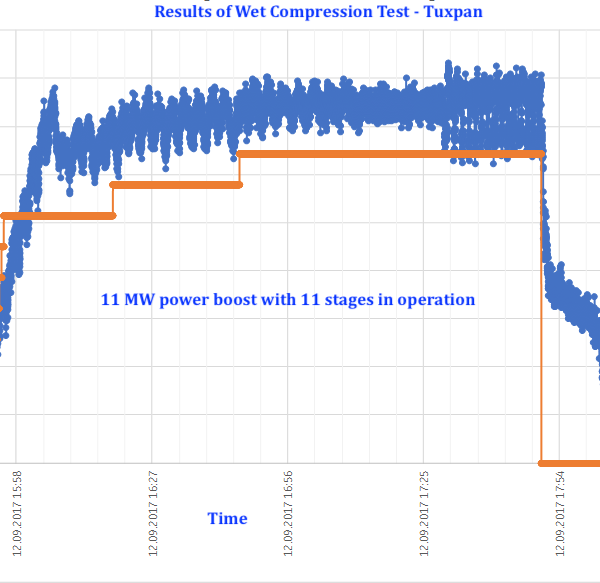
Controls Modifications
Wet compression reduces the combustion temperature, which can also lead to increased CO emissions. To get the full benefit of wet compression, and to keep CO emissions within permitted limits, it is best to modify the GT fuel controls to bring the combustion temperature back to where it was without wet compression. Mee Industries can arrange for controls mods, or we can recommend several third-party controls companies who have experience with these mods.
The combustion temperature goes down because wet compression adds water to the inlet airflow. The added water vapor increases the specific heat of the working fluid. Higher specific heat means there is less cooling during the expansion process, which causes the exhaust temperature to increase, even though there was no increase in the combustion temperature. The GT controls misinterpret the increased exhaust temperature as an increase in combustion temperature, so fuel flow is reduced. The result is a lower combustion temperature than there was without wet compression.
When doing more than about 0.5% wet compression, fuel controls modifications will keep CO emissions from going too high and will ensure that the full power boost is realized. When wet compression is in operation, the GT switches to a “wet control curve” and a higher exhaust temperature is targeted, in order to keep the combustion-temperature the same. Modifying the controls will increase the wet compression power boost and reduce CO emissions to normal levels.
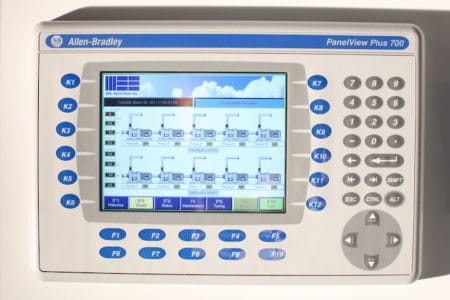
Boost Gas Turbine Performance with the Cost-Effective MeeFog System
The MeeFog system is a very cost-effective way to increase gas turbine power output. Installed costs are typically less than $150/kW.
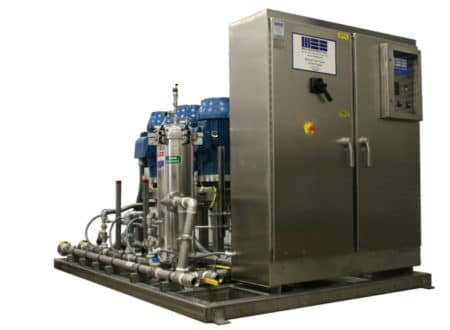
MeeFog High Pressure Pump Skid
Operational Benefits of MeeFog Wet Compression Systems:
- Nearly instant power boost of 20% or more
- Power boost available whenever ambient temperature is high enough that there is no risk of freezing at the compressor inlet
- Increase existing generating capacity
- Improve heat rate up to 10%
- Very small droplets greatly minimizes blade erosion
- Significant fuel savings compared to other systems
- Reduction in NOx emissions by up to 30%
- Reduced emissions per kW of power
- Lowest capital costs and fastest payback compared to other cooling technologies
Boost and Water Flow Rate by Turbine Type
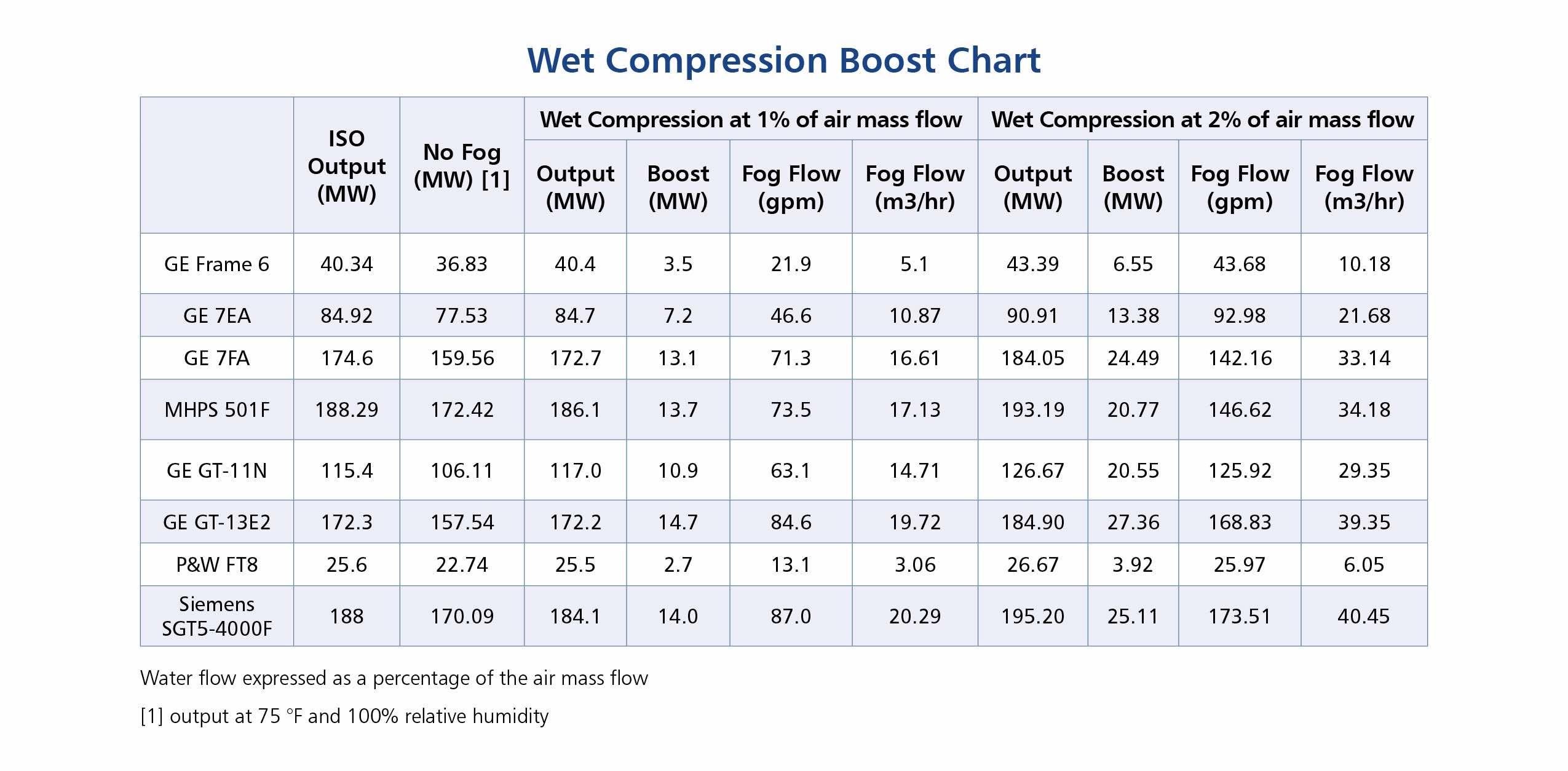
10 Micron Droplets with MeeFog Fog Systems
If the wet compression spray is made up of large droplets, it can erode the compressor blades through a process called liquid impaction erosion. Large droplets can cause microfractures in the metal surface, which can eventually lead to pitting. For example, using an online water wash system to get a wet compression power boost can lead to as much as 1/4” of material being removed from the leading edge of the blades in less than a year of operation.

The tiny water droplets from a MeeFog nozzle evaporate quickly, and 100% efficient evaporative cooling can be accomplished in just a few seconds. Air pressure drop through the nozzle manifolds is negligible. The average droplet produced by a MeeFog nozzle is less than 10 microns, about one tenth the diameter of a single strand of hair. Typical operating pressure is 2000 psi (138 bar). The MeeFog nozzle has been shown to consistently outperform other high pressure nozzles. They have a useful life of more than 30 years when used with properly treated water.
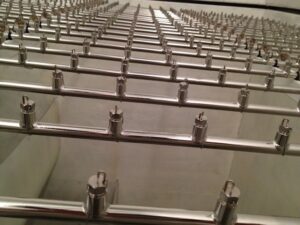
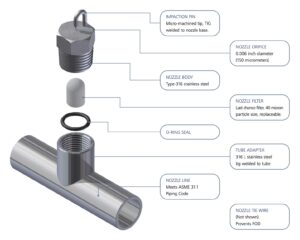
Fast Project Execution with Mee Industries
Mee Industries offers pre-engineered skids, which are small enough to be air freighted. Skids and feedlines can be installed while the gas turbine is in operation. Nozzle manifold installation requires an outage of 1 to 4 days. Projects can be completed as quickly as 20 weeks from the date of order. Mee Industries can provide turnkey installation or supervision for your installation team. We look forward to discussing your project with you. You can always contact us here at MeeFog for assistance in any of these steps.
